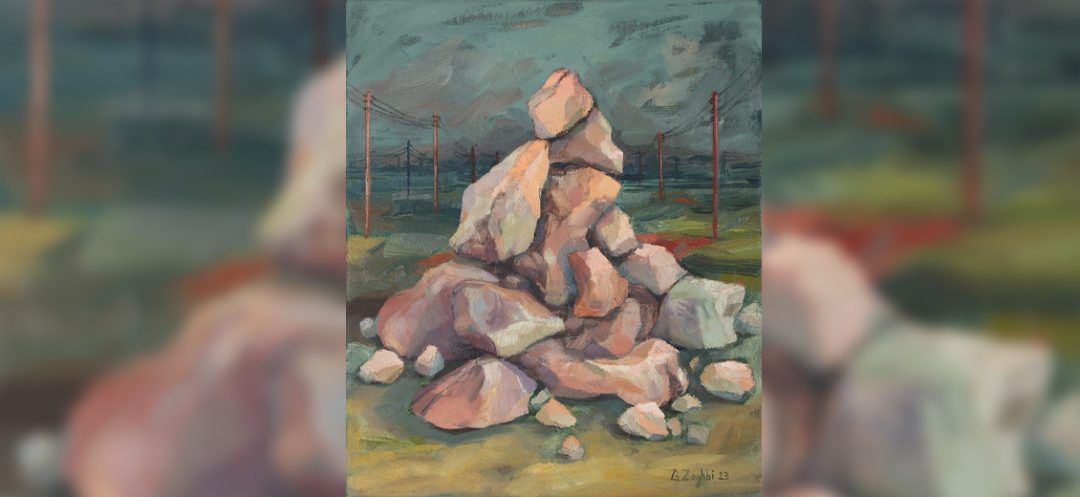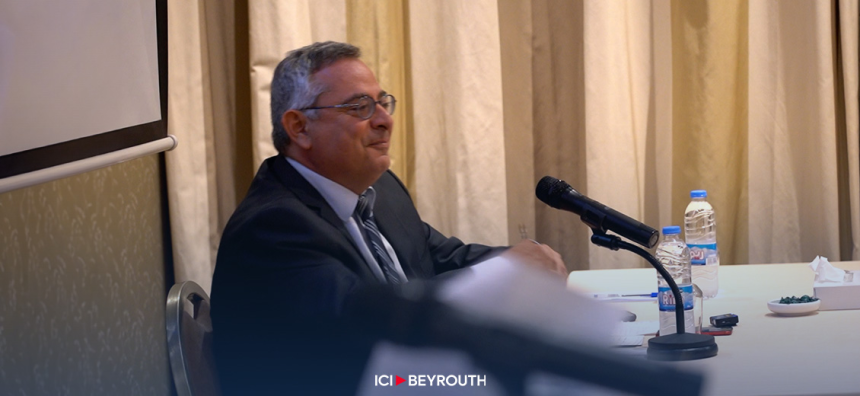
The Lebanese artist Ghada Zoghbi presents her solo exhibition "Wild Mindscapes" at the Janine Rubeiz Gallery in Beirut from September 4 to 28, 2024. She explores the relationship between humans and their environment through nearly abstract mineral landscapes.
In her solo exhibition titled "Wild Mindscapes," at the Janine Rubeiz Gallery until September 28, 2024, the painter Ghada Zoghbi invites the audience to discover a nearly abstract mineral world, an inner landscape populated by rocks and stones.
The artist participated in several group and solo exhibitions in Lebanon and abroad, notably in France, London, Qatar, Egypt and Algeria. She seeks to explore the interaction between humans and their environment, as well as the foundations of societal construction.
[gallery link="none" size="large" ids="288416,288417,288418,288419"]
For it is indeed about construction!
Ghada Zoghbi begins by gathering and arranging rocky elements to create her own composition, which she then reproduces on canvas.
This intuitive artistic process, stemming from the artist’s subconscious, transforms into a symbolic language to express the nostalgic desire to return to an original purity, to the essence of things, and to repair the damage inflicted on nature. It is a search for meaning to compensate for the absurdity of poles or wires slashing through the sky, or of cement destroying the landscape.
Fascinated by the formations of natural rocks, the artist places them at the heart of her canvas to examine their material, revealing their mysteries.
Through this assembly of stones, the artist seeks to return to the source, to rediscover the unifying link that can transcend political or religious divisions, essential to the development of family and community relations.
Thus, Ghada Zoghbi makes us aware that rocks or pebbles, shaped by centuries of metamorphoses and sculpted by primal elements, are undeniable witnesses of the passage of time, of natural and human phenomena, whether historical or geological. She reminds us that humans are the only beings on earth who have recycled stone to make weapons or to create shelters.
The artist also allows us to realize that stone, as an instrument of defense or refuge, is the essential cornerstone to humanity’s survival, to the development of civilizations, and to the construction of cities and temples.
By ensuring all conditions of stability, solidity and durability, stone even becomes a landmark to shelter illusory certainties or a balm to ease the existential anguish inherent to the human condition. It resembles our inner being in its strength and fragility, reflecting its ability to transform into a work of art or a field of ruins.
Amassed debris or sad remnants of fratricidal wars, eternal monuments or semblances of sculptures, rocks parade from canvas to canvas. They narrate periods of glory or decline and testify to the creative or destructive power inherent in human nature.
But above all, the mineral material becomes alive and pulsates under the painter’s brush. She lovingly draws its lines and contours, capturing the subtle nuances of shadow and light. The artist thus displays a harmonious blend of complementary colors, where warm, muted oranges subtly marry with blue-greens, contributing to the poetry and harmony of the entire work.
The pyramidal composition at the center of the canvas imparts majesty or sacredness to the rock, reinforcing the feeling of solidity and grounding. The absence of spatial reference, with a background often blurred and neutral, accentuates the abstraction of the subject, transforming it into a mental space or inner landscape.
In this regard, on certain canvases, bristling, threatening metal rods burst from reinforced concrete, awakening the noble tranquility of the stones. They become a reflection of our prejudices and fears, of those internal walls that weigh heavily on our conscience, acting as barriers to the vital impetus, to the creative flow.
However, through her work, Ghada Zoghbi encourages us to move forward, to free ourselves from the weight of social, mental or psychological chains.
In this respect, the scattered rocks in the painter’s work seem to gather into fortifications, releasing a powerful emotional charge, a surge of energy. An invitation to movement, akin to a marching crowd, to reconnect and rebuild!
[gallery link="none" size="large" ids="288423,288424"]
Above the heap of stones, a head even seems to emerge on the horizon, like a promise of a better future.
The material, thus sublimated through the artistic work, rises as a sacred temple, inviting us to whisper, like the poet, "Inanimate objects, do you have a soul?"
www.joganne.com
Read more




Comments